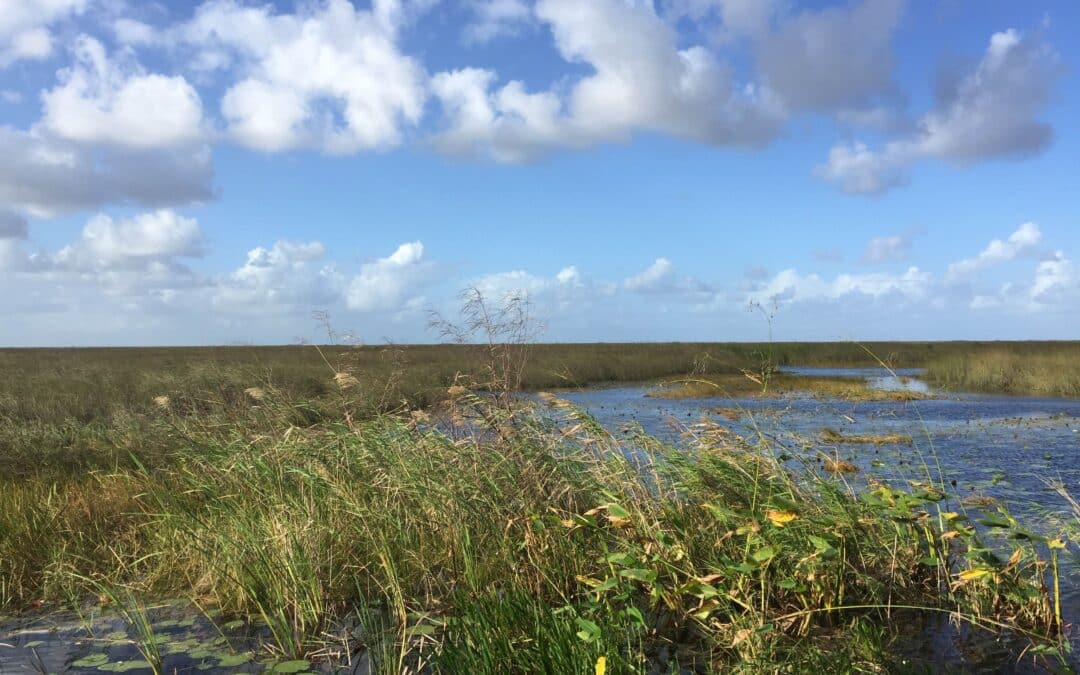One of our most beautiful and mysterious natural areas in the United States is changing. The Everglades is slowly losing some of its flora and fauna due to climate change and the encroachment of urban growth. If you wish to view the native plants of the area, such as the cactus tree, Krug’s holly, lignum-vitae, and manchineel, booking an airboat tour is a great way to experience these endangered species.
Endangered Palm Trees of the Everglades
The Brittle Thatch Palm (Thrinax morrisii) is a small palm with blue-green or yellow-green leaves that have a reflective white underside. The leaves are so tough, they were used to make roofs for thatches, hence their name.
Buccaneer palm (Pseudophoenix sargentii) is a lesser known variety that is cold-sensitive as well as slow growing. This variety is notable due to the extremes of nature in which it can survive, as it is drought and salt tolerant. The leaves are green, blue-green, or silver. In the wild, it can reach up to 25 feet tall.
Silver thatch palm (Coccothrinax argentata) has fan-shaped leaves that are green on the top and silver underneath. It is slow growing and can only tolerate the lightest of frost.
Florida thatch palm (Thrinax parvitolia) is a slower growing palm that reaches up to 30 feet. It has broad, yellowish-green leaves that can reach up to three feet in diameter. It blooms all year long, peaking in spring.
Endangered Exotic Trees and Plants of the Everglades
The Key tree-cactus (Pilosocereus robinii) is only found in southern Florida. When in bloom, the flower is large and white in color, and the fruit it produces is a purplish-red in color. This tree cactus can grow up to 32 feet high with a few arms or many.
Krug’s Holly (Ilex krugiana) is known for its interesting leaf shape. This tree can grow up to 55 feet in height having white flowers. Later it produces black, red, and purple berries that birds enjoy.
Lignum-vitae (Guaiacum sanctum) is a hardwood tree that is so dense the wood does not float. The tree flowers in the spring with small periwinkle flowers. It can mature up to 30 feet tall.
The manchineel tree (Hippomane mancinella) is best left for viewing than to being touched, as it is known as one of the most dangerous trees in the world. It is an evergreen with green-yellow flowers that can grow up to around 50 feet tall. All parts of the tree are poisonous. Do not touch the sap or ingest the fruit, nicknamed beach apple and little apple of death.
Make Memories Viewing Endangered Species on An Airboat Tour
Spending a couple of hours on an airboat tour viewing the exciting wildlife, exotic orchids, beautiful trees, and feathery ferns is a lifelong memorable event. Cypress Outdoor Adventures is ready to take you on this excursion. Reserve your Everglades airboat tour in Fort Lauderdale today by phone (954-260-1096) or book online now.




